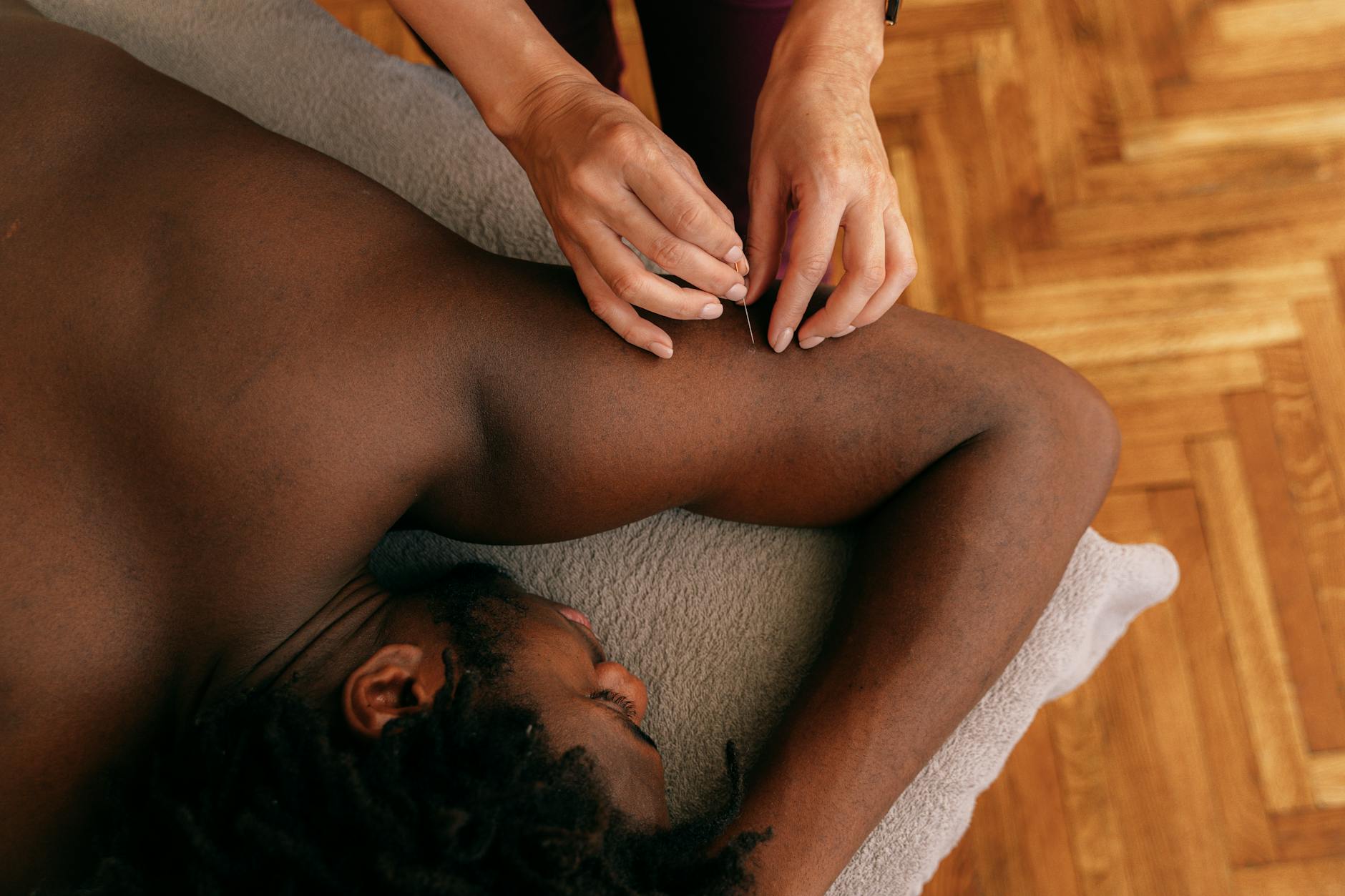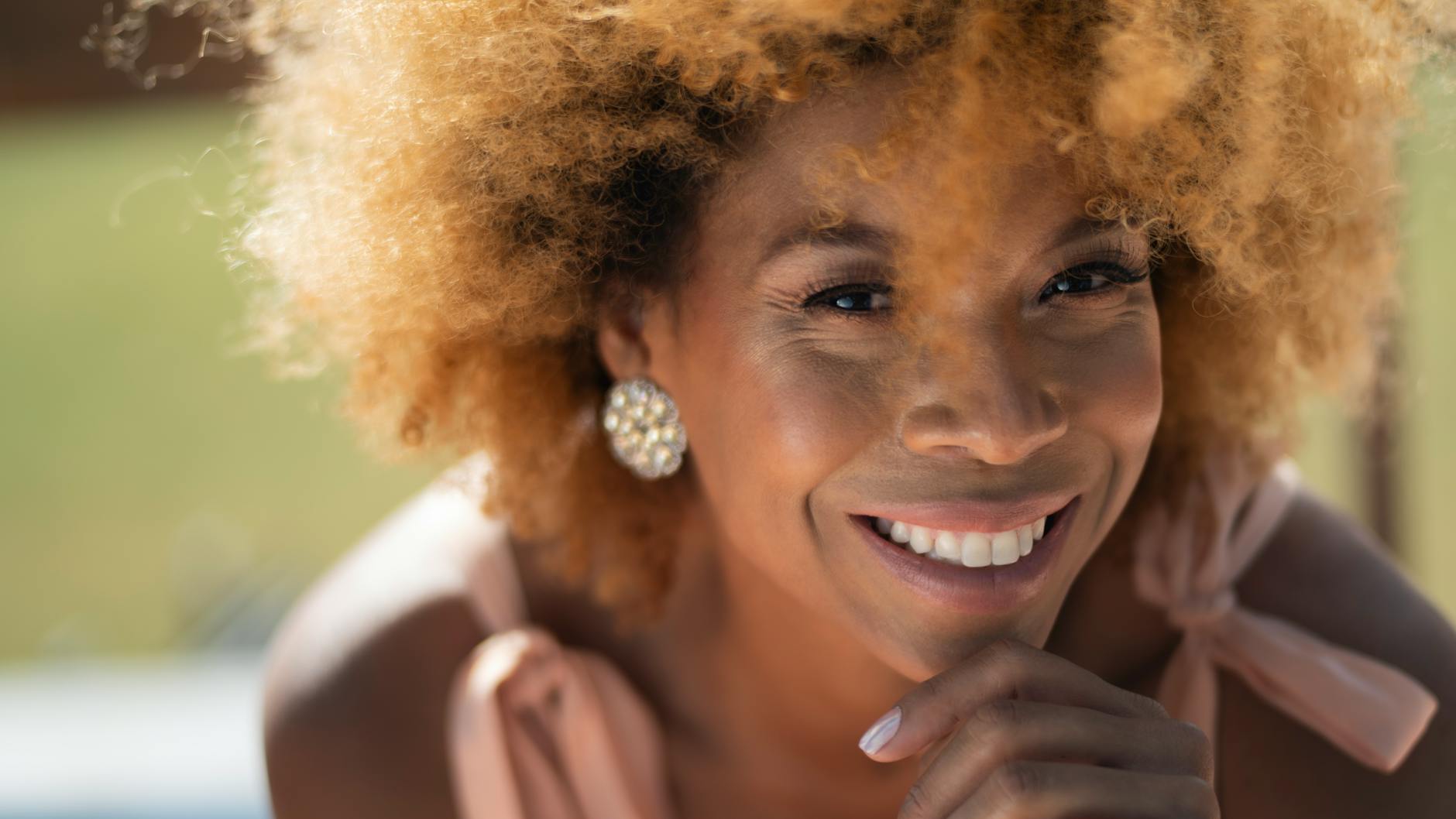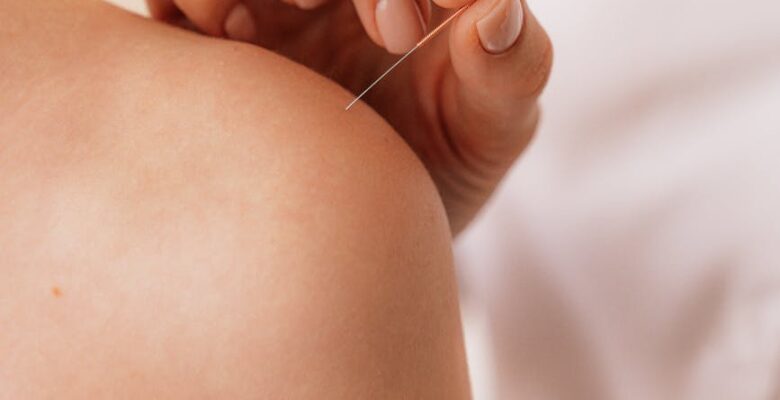Acupuncture is the insertion of extremely tiny needles into your skin at strategic places on your body. Acupuncture is primarily used to relieve pain. It is increasingly being utilized to promote general wellness, including stress reduction.
According to traditional Chinese medicine, acupunctrue is a treatment for balancing the flow of energy or life force, known as chi, which is said to flow along passageways (meridians) in your body. Acupuncture practitioners think that placing needles into certain locations along these meridians will help to rebalance your energy flow.
In contrast, many Western practitioners see acupuncture points as sites for stimulating nerves, muscles, and connective tissue. Some feel that this stimulation increases the body’s natural painkillers.
A Bit of History
It is believed to have originated in China, with the first reference in writings reaching back a few hundred years before the Common Era. Sharpened stones and bones from around 6000 BCE have been interpreted as acupuncture instruments, but they could also have been used for surgical purposes such as taking blood or lancing abscesses.
Documents discovered in China’s Ma-Wang-Dui tomb, which was sealed in 198 BCE, include no mention of acupuncture as such but do refer to a system of meridians, albeit one that differs significantly from the model that was ultimately adopted. The tattoo traces on the ‘Ice Man,’ who died around 3300 BCE and was discovered when an Alpine glacier melted, have sparked speculation. These tattoos could imply that a type of stimulatory treatment akin to acupuncture emerged independently of China.

The Yellow Emperor’s Classic of Internal Medicine, written around 100 BCE, was the earliest document to firmly explain an organized system of diagnosis and treatment known as acupuncture. The Emperor poses queries, and his minister, Chhi-Po, provides knowledgeable responses. The literature is most likely a compilation of centuries-old traditions presented in terms of Taoist philosophy, and it is still used to support specific therapeutic approaches.
The concepts of channels (meridians or conduits) through which Qi (vital energy or life force) flowed were well established by this time, while the particular anatomical locations of acupuncture sites emerged later.
Why Choose Acupuncture
Acupuncture is primarily used to reduce discomfort caused by a wide range of ailments and conditions, including:
- Chemotherapy-induced and postoperative nausea and vomiting.
- Dental discomfort.
- Fibromyalgia.
- Headaches include tension headaches and migraines.
- Labor pain.
- Low back ache.
- Neck pain.
- Osteoarthritis.
- Menstrual cramps.
- Respiratory diseases, such as allergic rhinitis.
- Tennis elbow.
Risks
Acupuncture poses few hazards if performed by a skilled, certified practitioner who uses sterilized needles. Common side effects include discomfort, mild bleeding, or bruising where the needles were implanted. Single-use, disposable needles are now the norm; therefore, the danger of infection is low.
Before receiving acupuncture treatment, make sure to inform the practitioner that you:
If you have a pacemaker: Acupuncture that uses moderate electrical pulses on the needles may interfere with a pacemaker’s operation.
If you are pregnant: Some acupuncture sites are supposed to induce labor, which could lead to a preterm birth.
How you prepare
No particular preparation is required before acupuncture therapy.
Choosing a Practitioner
If you’re considering acupuncture, take the same steps you would when choosing a doctor:
- Ask for references from people you trust.
- Examine the practitioner’s training and credentials.
- Most states require non-physician acupuncturists to complete an exam administered by the National Certification Commission for Acupuncture and Oriental Medicine.
- Interview the practitioner.
- Inquire about the treatment’s components, likelihood of success, and cost.
- Find out if your insurance covers the procedure.
Lastly, inform your doctor that you are considering acupuncture. He or she may be able to tell you about the effectiveness of acupuncture for your problem or refer you to an acupuncture practitioner.

What You Can Expect
Acupuncture Treatment
During an acupuncture treatment, an acupuncturist will put very tiny needles into certain areas of your body. The insertion of the needles normally produces minimal discomfort.
Each acupuncturist has their own style, which often incorporates elements of both Eastern and Western treatment. Your practitioner may inquire about your symptoms, activities, and lifestyle to establish the most effective type of acupuncture treatment for you.
He or she may also carefully examine:
- The portions of your body that cause pain.
- The form, covering, and color of your tongue.
- The color of your face.
- The intensity, rhythm, and quality of your wrist pulse.
Acupuncture treatment can last up to an hour, while some appointments may be substantially shorter. A standard treatment regimen for a particular problem would include one or two treatments each week. The number of treatments required will vary according to the severity of the illness being treated. In most cases, you will receive 6 to 8 treatments.
During the treatment.
Acupuncture points are located all over the body. Sometimes, the right spots are far away from the source of your suffering. Your acupuncturist will explain the general location of the scheduled treatment and whether you need to remove any clothing.
We will supply a gown, towel, or sheet. You lie on a padded table for the treatment, which includes:
Needle insertion. Acupuncture needles are put to different depths at crucial places in your body. The needles are quite thin, so insertion is usually not painful. People frequently don’t feel inserted at all. A normal treatment involves 5 – 20 needles. When a needle reaches the appropriate depth, you may experience a little aching feeling.
Needle manipulation. Following installation, your practitioner may gently twist or twirl the needles, as well as administer heat or moderate electrical pulses to them.
Needle removal. In most situations, the needles will stay in place for 10 to 15 minutes while you lie still and rest. The removal of the needles normally causes minimal difficulty.
Following the procedure.
Some people feel peaceful, while others feel energized following an acupuncture treatment. However, not everyone responds to acupuncture. If your symptoms do not improve after a few weeks, acupuncture may not be appropriate for you.
Critics
Acupuncture, despite its widespread usage in modern clinical practice, has remained a contentious issue. Many reviews are currently accessible, although the majority lack a critical attitude and are too promotional.
The purpose of this overview is to present a balanced and critical appraisal of the available information. Some of the original principles of traditional acupuncture are not backed by strong scientific evidence. Several plausible hypotheses seek to explain how acupuncture works, but none have been proven beyond question. Acupuncture’s clinical efficacy remains debatable.
Many controlled clinical trials and systematic reviews on these subjects have been published. When it comes to evaluating these data, significant challenges arise. Both clinical trials and systematic reviews suffer from high heterogeneity. Some of the problems may be answered by using the new ‘placebo needles,’ which allow researchers to effectively control for acupuncture’s placebo effects. The bulk of research, including such devices, has yielded no results beyond a placebo effect.
Acupuncture has been linked to major adverse outcomes. However, most large-scale research indicates that they are extremely rare. Non-serious side effects occur in 7-11% of all patients. Finally, acupuncture continues to be fraught with controversy. Some studies are encouraging, while others indicate that its clinical effects are primarily dependent on a placebo reaction.

To Conclude
Acupuncture’s advantages are sometimes difficult to quantify, although many people find it effective in managing a variety of unpleasant ailments.
Acupuncture has few adverse effects, so it’s worth a shot if you’re having difficulties managing discomfort with more traditional approaches.
